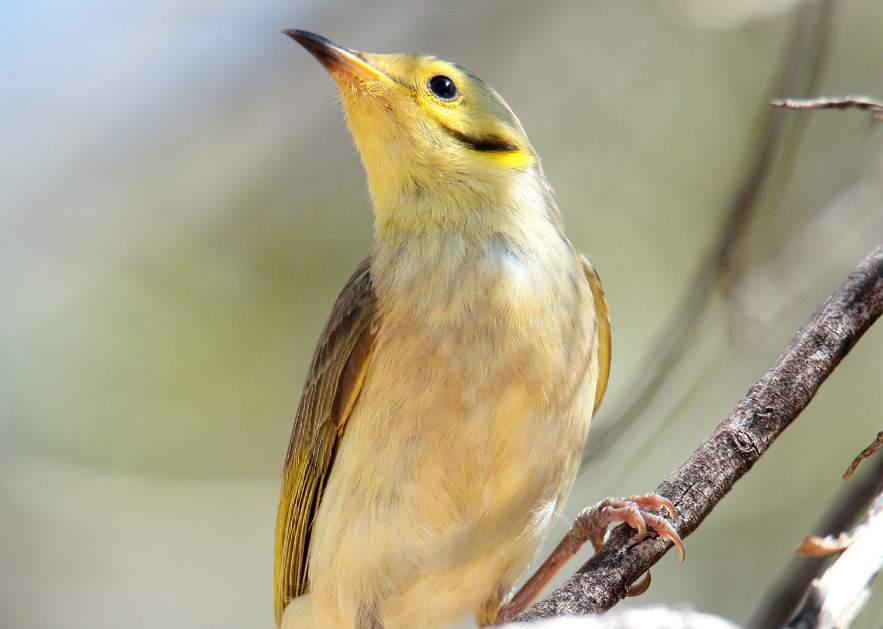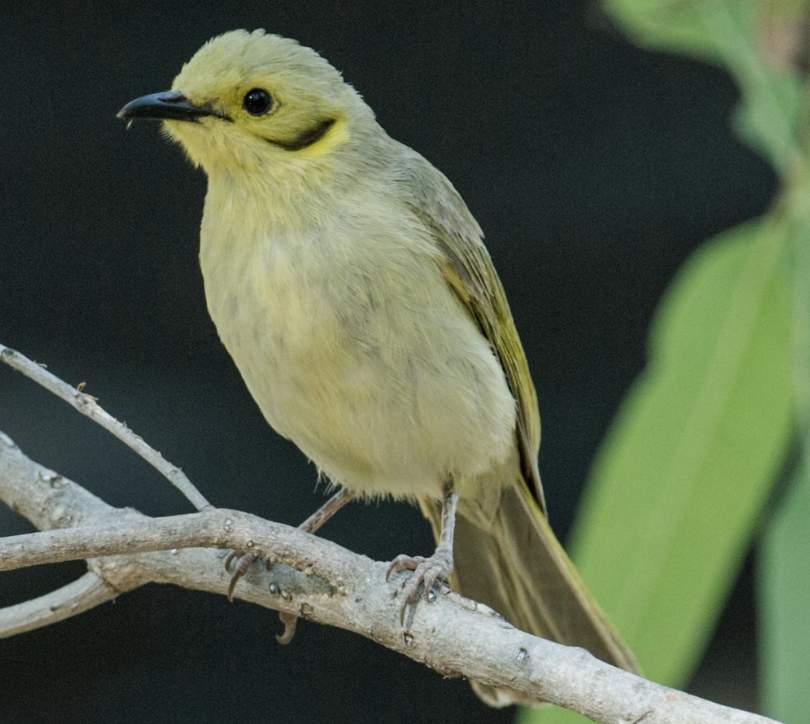Habitat: The Danish ornithologist “Finn Salomonsen,” in his revision of the world’s honeyeaters, first realized that the ‘Fuscous’ and yellow-tinted honeyeaters (Ptilotula flavescens) were merely races of the same species. To Australian ornithologists familiar with the large brown-plumaged ‘Fuscous Honeyeaters’ in southeastern Australia and the small, sulphur-washed ‘Yellow-tinted’ in the tropical north, it was difficult to understand.
But available to Salomonsen in the large museums of America and Europe were specimens of linking populations through eastern Queensland barely represented in collections in Australia. His conclusion solved at least one problem for field ornithologists familiar with both ‘Fuscous’ and ‘yellow-tinted’ races in the wild: why they were so alike in their calls. Throughout their range, yellow-tinted honeyeaters live in small to large colonies in well-shrubbed eucalypt woodland and open forest, often along creeks.
In most regions, they are rather sedentary, except for colonies in the extreme southeast and the Australian Alps. There they shift completely out of the high country in winter down to the coast or further north, returning each September–October to former breeding sites to nest. The birds feed variously on insects, lerps, honeydews, manna, nectar, and occasionally fruit, all gleaned in foliage and branchlets from the middle of shrubs to the tops of trees.
Most feeding is done in the middle strata and canopy of the woodland, with the birds hopping and fluttering actively about and flying in undulating dashes from one tree to the next. Flying insects are also caught on the wings. Groups are both aggressive and playful, often chasing one another in twisting aerial acrobatics. Often, they gather at water pools to drink and bathe, diving down, splashing into the surface of the water, and then fluttering back to a perch.
During breeding, colonies may comprise several territorial pairs, each holding ground I00–200 meters in diameter. Males mark territory both by singing from high vantage points and in aerial song flights, flying up at an angle above the trees, singing, and then diving back to the cover of the canopy. Birds are added to the northern race of the yellow-tinted honeyeater. resident pair may help in the feeding of their young.

Identifications: Both sexes are similar, but the male is a bit larger. Upper parts, wings, and tail pale to mid-olive-brown washed citrine on flight and tail feathers and over crown according to race. Face grey-brown with dusky eye-ring to pale yellowish without dark eye-ring; below ear, a black streak edged with short to long yellow plume. The throat and breast are cream-white with coarse, dull brown streaks and cream-yellow with finer, fainter streaks. The belly and undertail are plain white to creamy yellow. The eyes are dark brown. The bill is black or has a cream-yellow base and gapes out of breeding in the southeastern population. Feet are grey-horned. Immature (as adults) is duller; it has faint breast streaks, fawn rumps, and buff bills.
Vocalizations: Yellow-tinted A single whistled chip is all that a honeyeater call consists of when two feeding birds come into contact. Harsh, rapidly repeated whistled chirps in alarm. However, the song consists of repeated, dry, rattling twit’t’t’t’t on the same pitch from perches, often ending in harsh taw-taw-taw, particularly in southern races. In song flight, a ringing tiu-tiu-tiu-tiu or porra-chew, porra-chew, porra-chew-chew, chi-porra-chew as a bird climbs Local variations in dialect
Nest and Breed: Nesting and breeding occur in July–March, mainly August–December. The nest is a cup shape made of bark fiber; the grass seems to be down, bound with cobwebs; lined with finer grass stems, rootlets, wool, and hair; 40 x 25 mm inside; suspended by rim from the horizontal fork in a leafy branchlet 1–15 meters above ground.
Eggs: Yellow-tinted Honeyeater lays two eggs, sometimes three; light flesh to salmon buff, with small sparse spots of red-brown, purplish red, and paler grey, often in the zone at the large end. The eggs are oval, about 9 x 14 mm. The incubation period is about 14 days.
Distribution: Yellow-tinted Honeyeater is found in open eucalypt forests and woodlands, often along creeks, along the Great Dividing Range (both scarps), and across most of the tropical north except far north of Arnhem Land and much of Cape York Peninsula, Qld. Also, southeastern New Guinea
Taxonomy: The yellow-tinted honeyeater was first put in the genus Lichenostomus, but it was later moved to the genus Ptilotula after a molecular phylogenetic study showed that Lichenostomus was polyphyletic.
Alternative Names: This bird is also known as Fuscous Honeyeater, Pale-yellow Honeyeater, and Yellowish Honeyeater.
Size: Yellow-tinted honeyeaters measure about 150–170 mm long.
Races: There are about five races, probably all found in Australia.
Read More: Yellow-spotted honeyeater (Meliphaga notate)







